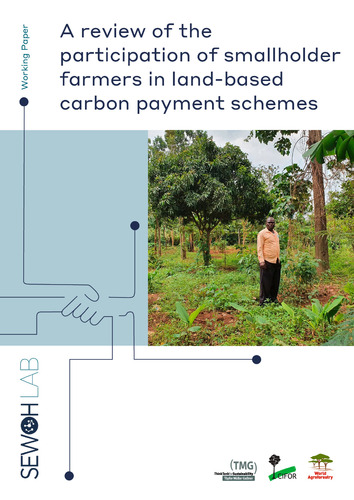A Review of the Participation of Smallholder Farmers in Land-based Carbon Payment Schemes
Abstract
There is renewed interest in the engagement of smallholder farmers in carbon markets. This follows in the wake of commitments by governments and companies to reduce or avoid the release of greenhouse gases. It is well known that soil can store large amounts of carbon, and soil stewardship offers a means to harness this potential. However, issues around permanence and scaling in smallholder farmer systems must be addressed if progress is to be made in this area. In this review, we examine the engagement of smallholder farmers in carbon sequestration payment schemes that promote sustainable land management (SLM). Drawing on a review of documents from carbon payment projects,
interviews with key informants, and scientific literature, we highlight approaches for smallholder engagement
along the project cycle, identify key barriers to participation, and outline options to enhance farmers’ agency.
In assessing a total of ten projects, we observe considerable variation in participation across the projects.
Project design tools classified as co-decision tools were common, with 60 % of projects reporting the use of
individualised land management plans, 30 % the use of participatory rural appraisals (PRAs) and 10 % participatory
mapping. However, few projects featured detailed frameworks for the incorporation of community feedback. The key informant interviews and literature review revealed that low carbon revenues, insecure land tenure, and high transaction costs are the primary barriers to participation, placing disproportionate pressure on marginalised households. Further, designing and implementing rigorous, participatory, and cost-effective monitoring reporting and verification (MRV) methodologies remains a challenge for many project proponents.
We also find that flexible contracts can foster broad participation by including details that are attractive to mallholders such as longer terms, local contract providers and low-cost SLM measures. Projects that strengthen community institutions and social capital can stimulate participation among the marginalised, reduce transaction costs, and promote equity as well as smallholder agency. Engagement with communitybased organisations or other civil
society actors can facilitate communication between project proponents and farmers, bolster farmers’ bargaining
power, and reduce transaction costs during implementation.

